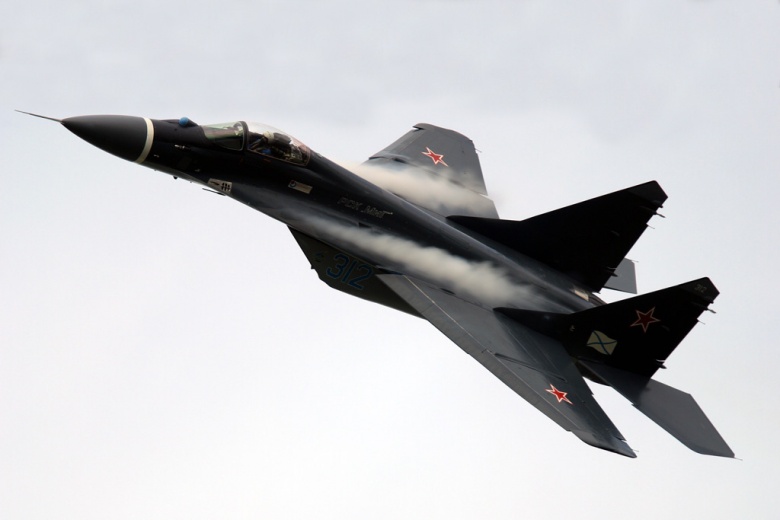Russia's MiG-29K Fulcrum D Is a Powerhouse in the Sky (But Forgotten)
The MiG-29K "Fulcrum D" is a Russian naval interceptor designed to operate from aircraft carriers. It was introduced by the Russian Navy in 2010.
Summary: The MiG-29K "Fulcrum D" is a Russian naval interceptor, designed to operate from aircraft carriers and introduced by the Russian Navy in 2010.
-With limited carrier availability, the MiG-29K has primarily been used for air-to-ground missions in Ukraine.
-Equipped with advanced weaponry, including air-to-air and anti-ship missiles, the aircraft can carry up to 10,000 lbs of munitions across its eight hardpoints.
-The MiG-29K's twin-engine design allows it to reach speeds of Mach 2, with enhanced electronic warfare and radar-absorbing capabilities.
-While exported globally, the Indian Navy is the only foreign operator of the MiG-29K.
The MiG-29K: Russia’s Forgotten Naval Fighter Finds a New Role
Naval interceptors are a special breed of fighter jets designed to operate from aircraft carriers.
The popular 1980s film Top Gun, starring Tom Cruise, helped propel naval interceptors into the imagination of the public. But the U.S. military is not the only one that operates these aircraft.
Indeed, in Top Gun, the American pilots flying the venerable F-14 Tomcat encounter Soviet fighter jets. While the aircraft they encounter are fictional, there is a fighter jet that closely resembles their capabilities.
The MiG-29K Fulcrum D
The MiG-29K, NATO reporting name Fulcrum D, is a twin-engine, single-seat, multi-role naval fighter jet. The Russian Navy introduced the aircraft in 2010, and approximately 20 fighter jets of the type are still in service.
The lack of an aircraft carrier from which to operate has made the MiG-29K Fulcrum D largely redundant for the Russian Navy.
The “K” stands for “Korabelnogo Bazirovaniya,” or “deck-based.” This designation highlights the fighter’s naval interceptor role. It also distinguishes it among the huge MiG-29 family, with its more than 1,500 aircraft of all types. The MiG-29 is an air superiority fighter jet designed as a response to the U.S. F-14 Tomcat.
MiG-29K: A Well-Equipped Aircraft from Russia
The MiG-29K Fulcrum D’s eight hardpoints can carry almost 10,000 lbs of weapons and a substantial number of air-to-air, air-to-ground, and anti-ship munitions. Specifically, the naval interceptors can carry Vympel NPO R-77 active radar homing beyond-visual-range air-to-air missiles, Vympel R-73 short-range air-to-air heat-seeking missiles, R-27 radar-homing air-to-air missiles, Kh-31 supersonic anti-ship cruise missiles, and Kh-35 subsonic anti-ship cruise missiles, as well as glide bombs and conventional bombs.
It can also carry S-8 or S-13 rocket pods with dozens of non-guided rockets for close air support missions. For dogfights and strafing, the MiG-29K Fulcrum D relies on its powerful 30mm Gryazev-Shipunov GSh-30-1 cannon.
In terms of performance, the MiG-29K Fulcrum D has two RD-33MK engines. The aircraft can reach a maximum speed of Mach 2 (around 1,500 miles per hour) at high altitudes, and around 900 mph at low altitudes.

The Russian fighter jet has an operational range of approximately 950 miles. Unlike its MiG-29 cousins, the “K” version of the aircraft can conduct aerial refueling and also refuel other aircraft in the event of an emergency, thus increasing its operational range.
As for defensive measures, the MiG-29K sports radar-absorbing coating and electronic warfare capabilities to make it more survivable in the modern air battlefield.
Today, the lack of an aircraft carrier to support its normal role relegates Russia’s small fleet of MiG-29Ks to air-to-ground missions against targets in Ukraine.
Although the MiG-29 has been exported to dozens of countries, only the Indian Navy operates the MiG-29K Fulcrum D.
About the Author
Stavros Atlamazoglou is a seasoned defense and national security journalist specializing in special operations. A Hellenic Army veteran (national service with the 575th Marine Battalion and Army HQ), he holds a BA from the Johns Hopkins University, an MA from the Johns Hopkins’ School of Advanced International Studies (SAIS), and is pursuing a J.D. at Boston College Law School. His work has been featured in Business Insider, Sandboxx, and SOFREP.
Image Credit: Creative Commons and/or Shutterstock.


